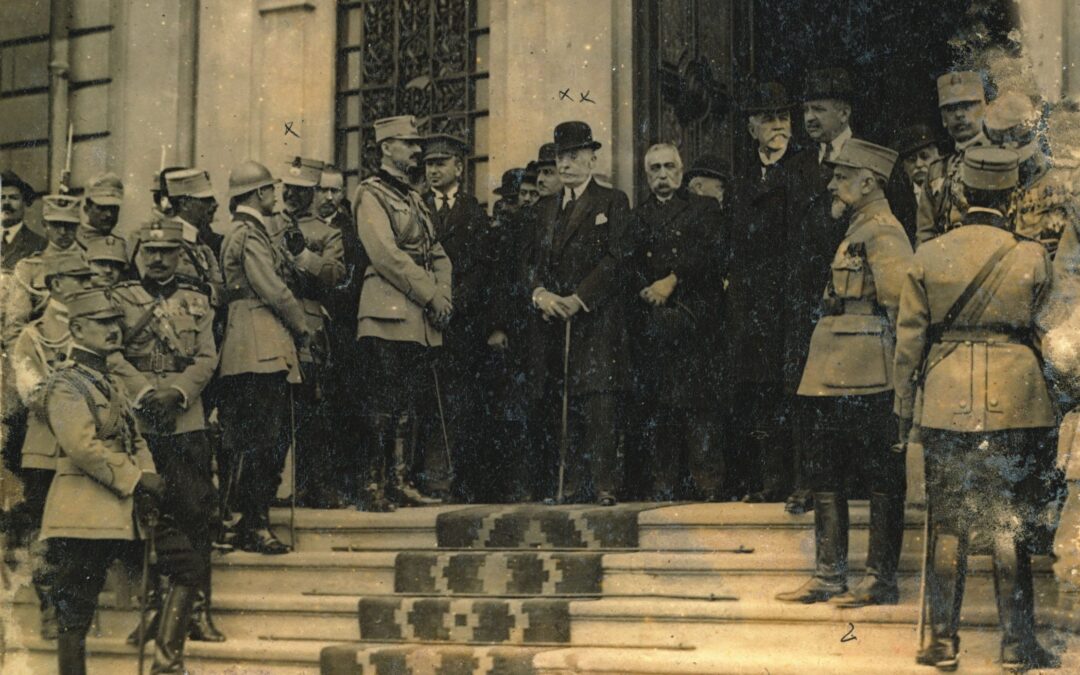The closure of the Brest-Litovsk armistice between Bolshevik Russia and the Central Powers had adverse repercussions on Romania. The military situation suddenly shifted in favour of the Central Powers, forcing Romania to request a ceasefire. But what was the military situation on the Eastern Front at the end of 1917?
At the end of 1917 and the beginning of 1918, after the Russian troops had withdrawn, the approximately 1.500 kilometres of the front were defended by Romanian soldiers. The Romanian army had at its disposal 18 infantry divisions, two cavalry divisions and five cavalry brigades. In September 1917, the Central Powers had 24 infantry divisions, seven cavalry divisions and four cavalry brigades. In the autumn months of that year, the Central Powers made a series of changes and transferred seven infantry and three cavalry divisions from the Romanian Front and another two cavalry brigades, but brought in four more divisions and one mixed brigade. Despite these changes, the Central Powers still had superiority and in case hostilities resumed, it could resupply. On the other hand the Romanian army had to be limited only to the existing stocks, losing all land connections with its Western allies through Russia.
Romania’s options, limited by its total isolation
Taking into account this situation and taking into account the very wide length of the front, the Romanian Great General Headquarters adopted a defensive position. If hostilities were resumed, Romanian units were to carry out rear fights in the space between the Eastern Carpathians and Siret, then this region would be abandoned. The service groups and heavy artillery were already withdrawn to the left of Siret as a precaution. The main resistance position of the Romanian army was to be concentrated between the Siret and Prut rivers. Another variant that was being discussed at the political and military level was resistance in a so-called “triangle of death”, around the localities of Tecuci- Vaslui- Huși. A third variant discussed in February 1918 was that in the case of an offensive of the Central Powers, the Romanian troops would fight on successive defensive lines in Bessarabia. However, all of these options were still severely limited by the total isolation in which Romania found itself after Russia left the war.
The cessation of hostilities on the Eastern Front created the conditions for the Central Powers to move troops to other theatres of operations, with five great units being withdrawn from the Romanian Front. Even so, they were still superior in number to the Romanian soldiers.
Following the departure of the Russian troops, the Central Powers would have been able to encircle the Romanian army with a simultaneous attack from the north, on the Romanian defensive alignment in the Eastern Carpathians and on the Lower Siret. Indeed, the operational intention of the Central Powers was very similar to this when they denounced the armistice and sent an ultimatum to Romania.
Bibliography:
Glenn E. Torrey, România în Primul Război Mondial [Romania in the First World War], Meteor Publishing House, Bucharest, 2014.
I.G. Duca, Memorii [Memoirs], vol. I, Express Publishing House, Bucharest, 1992.
The Count of Saint-Aulaire, Însemnările unui diplomat de altădată: În România: 1916-1920 [The testimonies of a former diplomat: In Romania: 1916-1920], Humanitas Publishing House, Bucharest, 2016.
Constantin Argetoianu, Memorii [Memoirs], Humanitas Publishing House, Bucharest, 1992.
Florin Constantiniu, O istorie sinceră a poporului român [A sincere history of the Romanian people], Encyclopaedic Universe Publishing House, Bucharest, 2008.
Translated by Laurențiu Dumitru Dologa

